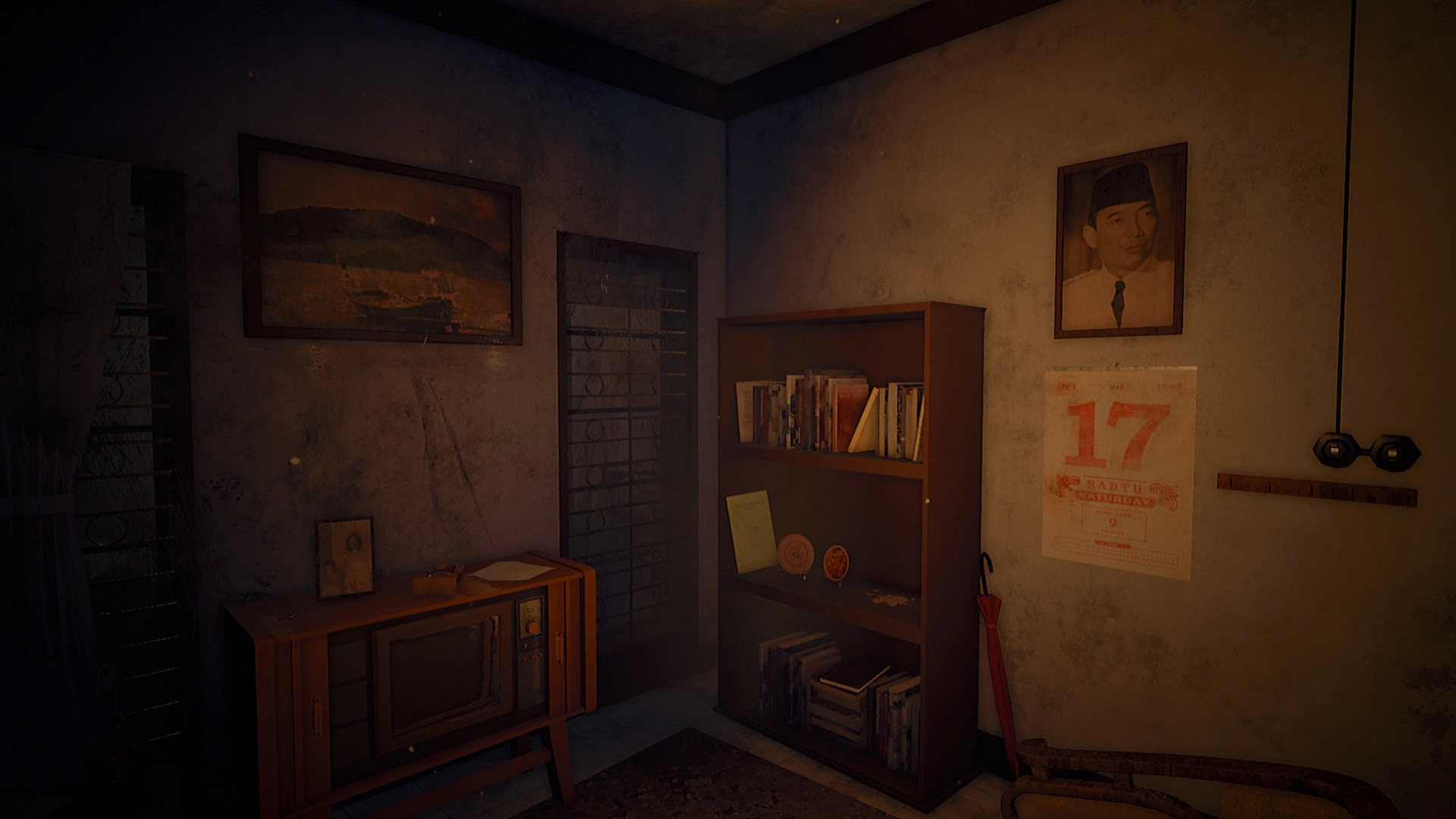Have you ever heard the word Pamali? In Indonesian culture, Pamali refers to taboos or restrictions that should never be broken. Violating them is believed to bring unsettling consequences, often beyond human understanding. Now imagine those myths brought into an interactive experience. How would it feel to face something unexplainable that demands you to pay the price?
Pamali: Indonesian Folklore Horror is a game developed by a local game developer, Storytale, that turns local myths into playable stories. It blends Indonesian culture, traditional beliefs, and supernatural folklore into an immersive narrative. It is not only a game with cheap jump scares but also teaches you about respect and choices.
Cross the Line and Find Out

The first folklore in Pamali introduces us to Jaka, a young man who returns to his hometown after years away. His main goal is simple: to sell his old family house. Yet the moment he arrives, the house feels different. Dusty furniture, old belongings, and eerie silence set the tone. Jaka begins unpacking and cleaning, unaware that his careless actions will lead to something he cannot explain.
As the story unfolds, Jaka’s behavior becomes the trigger for supernatural events. He mocks old items, throws away family memories, and even ignores traditional signs that something is wrong. Soon, strange noises fill the air, shadows lurk in the corners, and the presence of a ghostly woman begins to haunt him. The more he disregards the cultural warnings, the stronger the horror becomes.
Also Read! Halu: The Fracture, Psychological Horror that Blurs the Boundaries of Reality
The narrative does not lead to one fixed ending. Instead, it changes based on the player’s decisions. Every choice shapes the outcome, whether Jaka escapes, uncovers family secrets, or faces a tragic fate. This flexible storytelling makes the game replayable and personal, as no two runs feel exactly the same.
Pamali’s story may look simple, but it hides many layers. It reflects the clash between modern attitudes and traditional values. Jaka represents people who neglect old beliefs, while the ghost embodies the consequences of forgetting cultural respect. This tension drives the plot and keeps players curious about what lies deeper inside the haunted house.
Survive Threshold of Sanity

Pamali adopts the mechanics of a first-person exploration game. At its core, players walk through the house, interact with objects, and make choices. There are no weapons, no combat systems, and no traditional jump scares designed only to shock. Instead, fear grows slowly from the environment and the consequences of your actions.
Every item you touch or ignore has meaning. Throwing away an old photograph, making rude comments, or turning off a sacred lamp can change how the ghost reacts. These mechanics create a sense of responsibility. You are not just exploring a haunted house, but you are deciding how respectful or careless you want to be.
Also Read! Petaka: The Bloodline Curse
Learn that caution is better than boldness. Small actions, like cleaning gently or keeping objects in place, can reduce danger. Meanwhile, reckless behavior leads to more intense encounters. This system encourages observation, patience, and cultural awareness. If you treat the house as a sacred space, you will likely survive longer. If you act without thought, you might face the full wrath of the unseen.
Bounds Cultural Identity

Pamali highlights a realistic yet eerie visual style. The graphics are not about high-end technology but about authenticity. The house looks like a true Indonesian rural home, with wooden walls, old cabinets, and dim lighting that feels natural. This design creates an atmosphere that feels familiar yet terrifying.
The environment is carefully crafted to immerse players in local culture. You can see traditional decorations, family photos, and everyday household items from the 1990s. These small details make the house believable, as if you have stepped into someone’s forgotten memories. When the ghost appears, her design feels rooted in Indonesian folklore, not just a generic horror figure.
Also Read! DreadOut – A Haunting Journey into Indonesian Supernatural Horror
Sound plays an equally important role. The creaking of wood, the hum of insects at night, and distant whispers create tension. Visual effects, like flickering lights or moving shadows, are subtle but effective. Together, the sound and visuals work to unsettle the player without relying on overused horror tricks.
This combination of cultural detail and atmospheric design makes Pamali stand out among indie horror games. It feels less like a fantasy and more like a real nightmare shaped by traditions many players outside Indonesia may have never encountered before.
Would You Dare Trespassing the Culture
Pamali: Indonesian Folklore Horror combines story, gameplay, and visuals into a unique cultural horror experience. Its narrative about Jaka and the White Lady shows how disrespecting traditions can bring terrifying consequences. The gameplay mechanics reinforce this theme by tying every choice to how the haunting unfolds. The visuals and sounds support the story with authenticity and atmosphere.
This game is perfect for players who enjoy horror that goes beyond cheap scares. It is also suitable for those curious about Indonesian culture and folklore. By blending myth and interactivity, Pamali offers a chilling yet meaningful lesson: respect what you may not understand or be ready to face what lies beyond.

